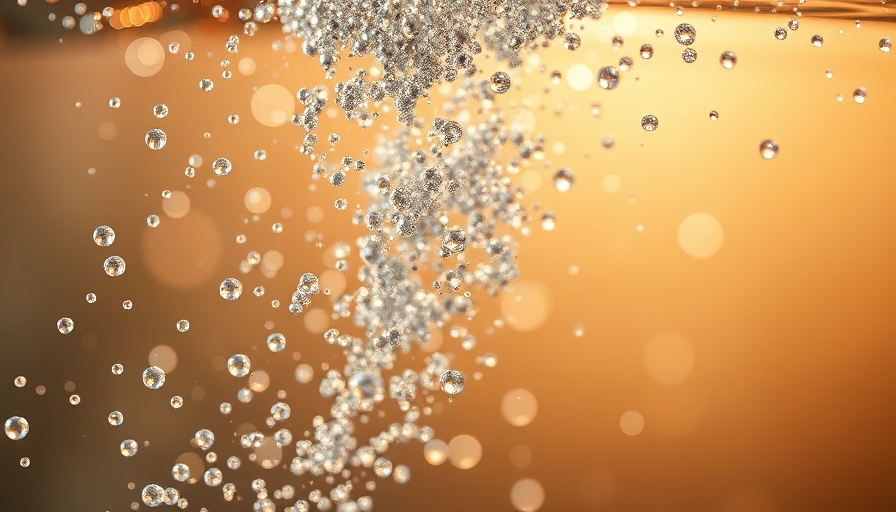
Understanding Colloidal Silver: An Ancient Remedy with Modern Applications
For centuries, colloidal silver has been utilized as a natural remedy, dating back to ancient civilizations who recognized its potential health benefits long before the advent of antibiotics. Today, with a surge in holistic health trends, colloidal silver has re-emerged as a popular supplement. However, opinions about its efficacy vary tremendously; while some hail it as a miracle cure, others caution against potential dangers. What’s the reality?
In recent years, emerging research has begun to highlight both the benefits and risks associated with colloidal silver. There’s ongoing exploration into its uses, especially at the topical level. While colloidal silver products are recognized for their antimicrobial properties, it's essential to navigate this topic carefully due to varying product quality and the historical regulatory stance.
The Science Behind Colloidal Silver: What’s Knowable?
Colloidal silver consists of tiny silver particles suspended in liquid. It can contain varying concentrations of silver—true nanoparticles, ionic silver compounds, or protein-bound silver—all of which determine the efficacy and safety of the product.
Historically, colloidal silver acted in several ways within the human body:
- Catalytic Oxidation: Silver possesses a natural affinity for oxygen, allowing it to react with bacteria and viruses, effectively disrupting their cellular respiration.
- Interaction with Bacterial Cell Membranes: Silver ions can attach to bacteria, blocking their energy systems.
- Binding with DNA: Silver ions can penetrate bacterial DNA, interfering with reproduction and metabolism.
This scientific backing illustrates that while colloidal silver has beneficial properties, they depend highly on the specific formulation and intended use. It’s crucial to note that the FDA does not endorse colloidal silver for treating medical conditions, stating it’s misbranded when marketed as a health treatment.
What Does Research Say? Efficacy in Focus
With renewed interest in natural health products, research into colloidal silver is growing. A pivotal 2012 study showed that silver nanoparticles exhibit significant antibacterial activity against various antibiotic-resistant bacteria, which points to their potential role in modern therapeutics.
Despite this, caution is advised. The FDA has yet to approve any colloidal silver products as a medical treatment, and misuse can lead to adverse effects, notably argyria—a condition causing discoloration of the skin.
Market Trends: Navigating Quality and Safety
The colloidal silver market is as diverse as the products it offers. Before purchasing, consumers must research and understand the concentration and formulation of the product to ensure safety and effectiveness. Look for products tested by independent laboratories to confirm their claims.
Furthermore, awareness of the regulations surrounding these supplements is vital. While colloidal silver is now sold under dietary supplement labels, consumers should critically evaluate the claims made about their health benefits.
Real-Life Applications: Anecdotes and Advice
Those who have integrated colloidal silver into their routines often report using it for wound care, skin infections, and even as a preventive agent against seasonal illnesses. Anecdotal evidence, however, should be interpreted cautiously and accompanied by medical advice.
Key Takeaways: Inform Yourself for Better Wellness
While colloidal silver carries historical and modern health implications, it’s clear that responsible usage is crucial. Misunderstandings surrounding its applications create a need for consumer education.
As you delve into the world of colloidal silver, keep these points in mind:
- Only purchase high-quality, well-regulated products.
- Consult with a healthcare provider before starting any new supplement.
- Be aware of potential side effects and the limitations associated with colloidal silver.
The Road Ahead: A Call to Explore and Understand
As the conversation around holistic health deepens, so does our understanding of products like colloidal silver. They have potential benefits intertwined with risks that warrant informed consideration. Encourage discussions with healthcare professionals about holistic practices, fostering an environment of learning and awareness.
Integrating knowledge from trusted resources and studies empowers individuals to make informed decisions about their health—a critical step toward holistic wellness.
If you're eager to explore the realm of natural health remedies and want to stay updated on contemporary health trends, consider subscribing to trusted health newsletters and resources. The journey to understanding wellness is always evolving!
 Add Row
Add Row  Add
Add 




Write A Comment